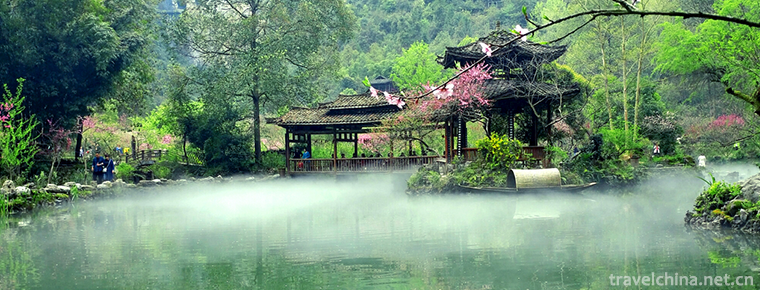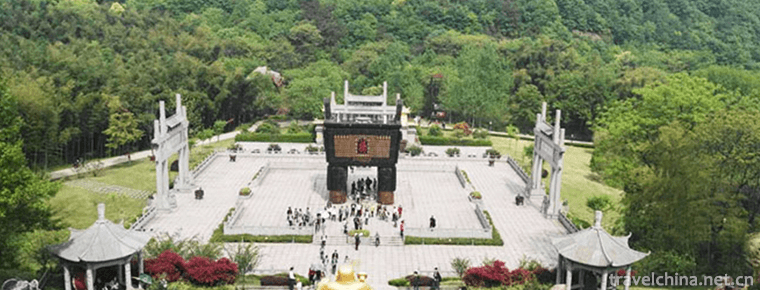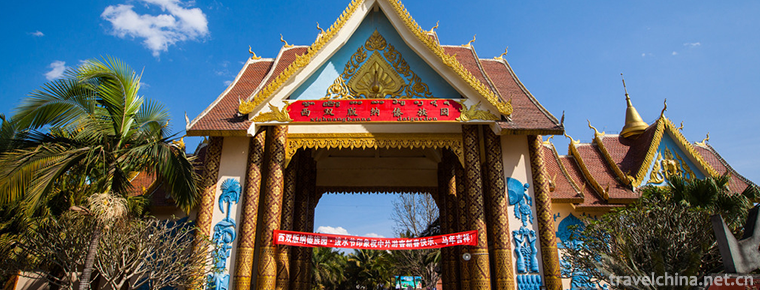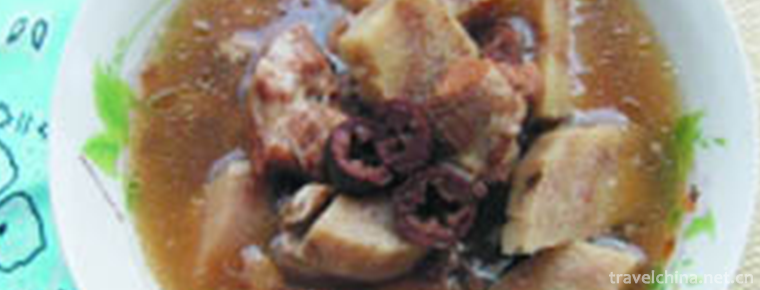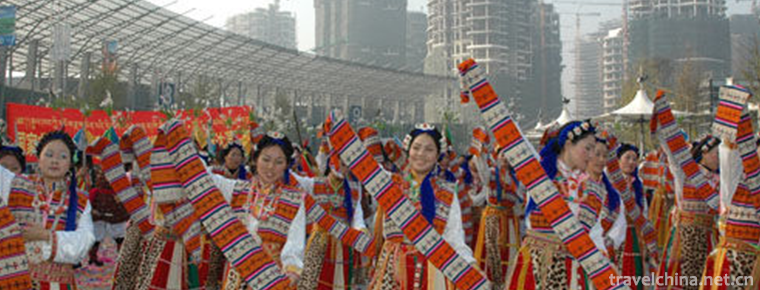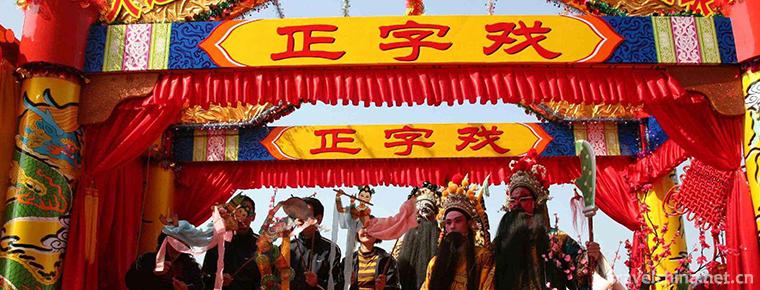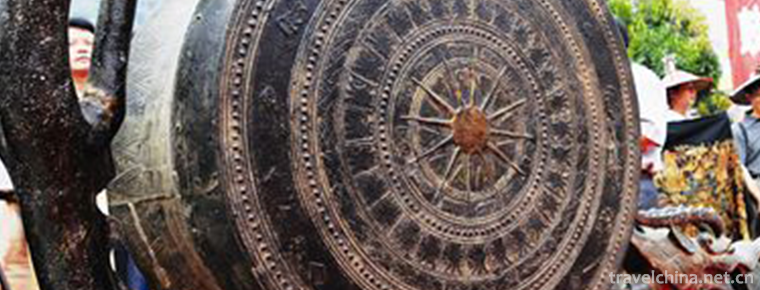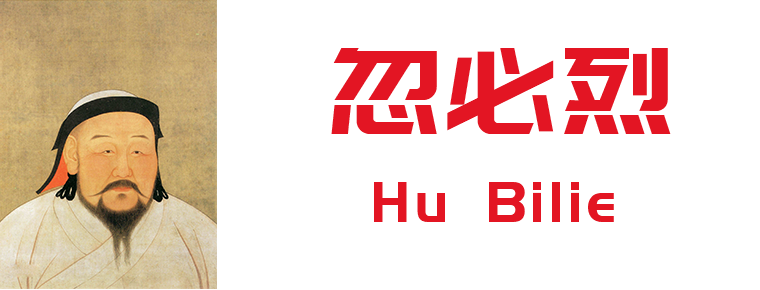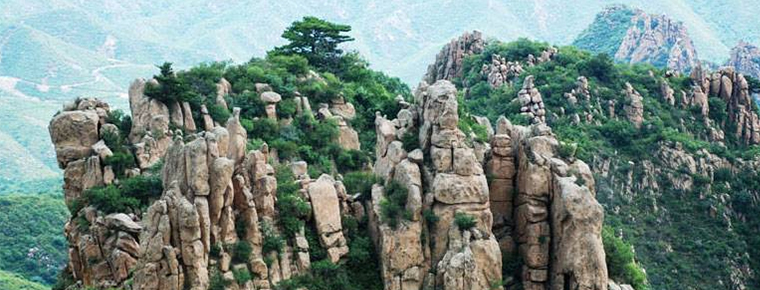Xianshi ancient town scenic spot in Zigong City
Xianshi ancient town scenic spot in Zigong City
Xianshi ancient town scenic spot in Zigong City stands on the Bank of Fuxi River 11 kilometers southeast of Zigong City, the "Millennium salt capital", which is in contrast with Zigong, a famous historical and cultural city. Xianshi ancient town has a long history, ancient buildings and cultural relics are well preserved. In 1992, it was approved as a famous historical and cultural town in Sichuan Province by the provincial government. At the end of 2004, Xianshi ancient town applied for "famous historical and cultural town of China" and passed the evaluation of the State Council expert group.
In March 2018, the ancient town scenic spot of Xianshi in Zigong City was officially promoted to a national 4A tourist attraction.
Historical origin
Xianshi, formerly known as Xiantan, was built in the Sui Dynasty before 1400, and was renamed "Xianshi" in the first year of the Republic of China.
According to legend, eight immortals, the illegitimate daughter of the Jade Emperor, was bold and unrestrained. She was tired of extravagance in the sky and yearned for the beautiful scenery of the world. She took peony fairies, lotus fairies, lions, dragons, tigers, elephants and monkeys to steal from the earth. She played around Guxian City, and was so happy that she lay down beside the river and fell asleep.
The Jade Emperor was so angry that he took back his soul and left his body in the world and turned into a landscape. Therefore, from a high point of view, the mountain landform of the ancient town looks like a beautiful girl lying on her side. There is another beach of Fuxi River here, just under the feet of fairies, so it is called "Xiantan".
geographical environment
Regional location
Xianshi is located in the north of Yantan District, Zigong City, 104 ° 52 ′ E and 29 ° 20 ′ n. Xianshi town area is adjacent to Xindian township of Da'an District in the East, Vashi town of Yantan District in the south, Juxi river of Yantan district and Weiping town in the west, and Heping Township, Dashanpu Town, Sanduozhai town and Heshi town in the north. From (Gong) Fu (Shun) road, it passes through the town from the south to the north. It is only 10 kilometers away from Zigong City in the north, 11 kilometers to Heshi Town, 10 kilometers to Washi town in the south, and 27 kilometers to Fushun County.
physical geography
Xianshi town belongs to shallow hill landform, with an elevation of 270-360 meters, with an average elevation of about 300 meters. The terrain of the town is high in the north and low in the south. The western boundary of the town area is Juxi river. In the north of the town, there is a tributary of Juxi River, Changtan River, which flows from east to west through Yaoba, and Libai River, a tributary of Changtan river. In the south of the town, there is Yangliu River, a tributary of Zhuxi River, which flows into Juxi river through Dayan from east to west. The total length of the three tributaries passing through Xianshi town is about 25km. It is one of the main irrigation water sources in Xianshi town. There are three small reservoirs in the town with a total capacity of 455000 square meters and an irrigation area of 1170 mu. Among them, Maqiu reservoir has a storage capacity of 200000 cubic meters and an irrigation area of 370 mu; Shangshui reservoir has a storage capacity of 114000 cubic meters and an irrigation area of 140 mu; Huangjue reservoir has a storage capacity of 141000 cubic meters and an irrigation area of 660 mu. Xianshi town belongs to a typical subtropical monsoon climate, with four distinct seasons, humid and mild climate, abundant rainfall, sufficient sunshine, long frost free period, annual average temperature of about 18 ℃, frost free period of 354 days, annual rainfall of 1261.2 mm, annual dominant wind direction of northwest wind, average wind speed of 1.8 m / s.
Since ancient times, there have been "fairies descending to the river, gold and silver jewelry scattered on the beach; jade belt river with thousands of sails, Yushu bamboo dancing. The folk song of "the tiger leads the elephant trunk, the parrot is happy, the lion looks back at the peony; the drum sounds in the Tiantan River, and the immortals meet on the bridge pier and dam", which vividly summarizes the beautiful legend and beautiful environment of Xianshi ancient town.
The ancient town of Xianshi, Zigong, is a thousand year old town with a history of more than 1400 years. It is one of the important ports for salt transportation in Fuxi River in those years. It is commonly known as "the first town of salt transportation in China". In the past, Zigong well salt went into Tuojiang River, Yangtze River, Chishui, Rongcheng, West Sichuan, North Sichuan, East Sichuan, and Three Gorges. The ancient town became the first important post station and water wharf for well salt going out of Sichuan. Today, there are various kinds of traditional handicrafts such as iron making, cotton plucking, spinning, fishing, and traditional festivals such as dragon lantern, bridal sedan chair, Zhongkui temple fair, street tea house and Sichuan Opera The folk customs such as friendship, long pole and dry tobacco are well inherited with unique customs. The ancient town with beautiful natural scenery and magical historical and cultural relics makes people linger.
Classical style
Xianshi town nestles on the Bank of Fuxi River. The thousand year old town has experienced countless ups and downs, and is still charming. Zigong was once the only place for well salt to come out of Sichuan, known as the Pearl on the ancient salt road. It is also famous for "four streets, five stacks, five temples, one ancestral temple, three docks, one carp, three archways, nine steles and ten lands", as well as the exquisite classical architectural complex and the prosperity of Buddhist culture. Therefore, it has been approved as a provincial historical and cultural city by the people's Government of Sichuan Province, and has been determined as a provincial pilot town of small towns. In May 2007, it was named "famous historical and cultural town of China".
Since the reform and opening up, all aspects of the ancient town have been greatly developed. There are rich ancient cultural and natural landscapes here. Even the name of the ancient town comes from the beautiful legend: "the daughter of the Jade Emperor was intoxicated by the beauty of the world. She went down to the earth and lay on her side beside the Bank of the Fuxi River and was named Xiantan." Therefore, the ancient architectural art and Buddhist culture are full of the charm of this ancient town. The ancient buildings in the late Ming and early Qing Dynasties: Nanhua Palace (built in 1692 A.D.), Tiangong (built in 1850), red walls and black tiles, Zhongao Gaoqiao, Diao Liang Huadong, wood carving, birds, animals, flowers, insects and fish, all of which are lifelike and vivid. The Buddhist culture here is also very prosperous. There are many Buddhist statues and sculptures, fragrant incense, ancient temple bells echoing in the ancient town, as well as the "fairy Valley", once known as "yaochi". There are cliff carvings, grottoes, Guanyin, moon well and other places of interest. Xianshi town is really a good place for leisure and vacation.
Scenic spot setting
Xianshi ancient town has four streets, five stacks, five temples, one ancestral temple, three docks, one carp, three archways, nine steles and ten lands
Four streets: Main Street, banbian street, Xinjiezi street and Xinhe Street (the four streets remain the same).
Five Temples: Nanhua temple, Tiantian temple, Chuanzhu temple, Huguang temple and Jiangxi temple
One ancestral temple: Chen family ancestral hall (intact)
Third wharf: salt transport wharf (Xianshi salt ship wharf, it is hard to find traces. The train replaced the salt ship, and the way of transporting salt changed completely.)
Three archways in one Li: there are three archways with different architectural features in one Li (one wood and two stones)
Nine steles and ten lands: shamaoshi, jiaohuayan, dayudong, Xiaoyudong, yueyuejing, dingjiatuo, yinba mountain, yinheshan, yingmenkou, luojiadong, Emperor's tomb, Wannian tomb, huangjueyan, etc. (the information is not complete and cannot be confirmed. The historic sites here were destroyed during the cultural revolution.)
Xianshi town area, there are undeveloped scenic spots, such as fish hole, moon tomb, Hu's ancient well, Qinu tomb, Shimen hall, etc.
Population administration
Xianshi town is subordinate to Yantan District of Zigong City. It is only 11 kilometers away from Zigong City, covering an area of 55.12 square kilometers. It has a population of 38068 people. It governs 26 agricultural villages and one street community. The town covers an area of 0.96 square kilometers, of which the ancient town area covers 17.6 hectares. The town has a population of 4150 people, including 1861 non-agricultural population, 2289 farmers who enter the town for business, house purchase and temporary residence The comprehensive land use is 51.7 square meters, the urbanization level is 11%, the GDP is 415.73 million yuan, the proportion of primary, secondary and tertiary industries are 48%, 27%, 25% respectively, and the per capita income of farmers is 2390 yuan in 2005. The town has basically formed a village and town system pattern of 1 central town, 2 general market towns, 4 central villages and 19 grassroots villages.
In the Qing Dynasty, Xiantan Changbao was established in Shangbei road. Xianshi group was set up in 1912, Xianshi town in 1935 and Xianshi Township in 1941. After liberation, Xianshi township was divided into Xianshi, Shuikou, Dongshan and Shili townships in 1951. In 1955, Xianshi, Dongshan and Shili townships were established. In 1958, Shuikou township was merged into Xianshi commune. The township was restored in 1984, and Yaoba and Dayan were merged into Jianzhen in 1995. Located in the northwest of the county. Fuxi River east bank, 25 kilometers away from the county. It covers an area of 55.3 square kilometers and has a population of 39000. Fu (Shun) from (Gong) highway transit. It has jurisdiction over 26 village committees and Xiantan neighborhood committees in Shangshui, Tiancheng, bamao, Huafeng, Shita, Yuehe, Yulong, Yudong, Jiankou, aodian, Yunxi, Shuikou, yaowan, Dongshan, Wuqi, Jiaowan, Xiangshan, Dayan, Yujia, Baisheng, Badou, Shihou, Shiqiao, Machu, Nanhe, Baishu and Xiantan neighborhood committee.
natural resources
Township enterprises have brewing, feed chemical, chemical fertilizer and other plants. Agricultural production of rice, wheat, sweet potato, corn, soybean. Economic crops include rape, sugarcane and jute. And raising silkworms and pigs. There are five ancient temples and "fishing cave" scenic spots in the territory. There are many cliff stone carvings between the stone forest outside the cave. In April 1992, it was approved by the provincial people's government as a famous town at the provincial level.
cultural meaning
It is dominated by the trade buildings of Chuandou style dwellings in southern Sichuan. The buildings retain the original style and features, and there are many temples and ancestral halls. In particular, the well preserved "four streets, five fences, five temples, one ancestral temple and three wharves" have become the representative works of the unity of architectural style and design ideas of ancient towns in China. It is known as "the specimen of southern Sichuan town" and the "living specimen" of folk customs in southern Sichuan.
Traffic information
Bus: there are buses from Zigong railway station square to Xianshi town; buses from Zigong to Fushun and Zigong to Washi town pass through Xianshi ancient town. The ticket is 3 yuan. It takes about half an hour to drive.
Self driving: drive from Zigong railway station along Zifu road eastward for more than ten kilometers to Xianshi ancient town.

-
Youyang Peach Blossom Source Tourist Scenic Area
Taohuayuan Scenic Spot is located in the suburbs of Youyang County, which is known as the "Liangdu of Chongqing". It is a national AAAAA-level tourist attraction.
Views: 268 Time 2018-12-12 -
Malenqi Peak Forest Tourist Area
Located at the junction of Tongling, Nanling and Fanchang counties on the South Bank of the Yangtze River, Maren Qifeng scenic spot is located in the middle of the southern Anhui tourism belt.
Views: 202 Time 2019-02-06 -
Niangziguan Scenic Area
Niangziguan is a famous pass of the Great Wall of China, known as the Ninth Pass of the Great Wall of China, and it is a must for military strategists of all dynasties..
Views: 224 Time 2019-02-07 -
The Dai Garden of Xishuangbanna
The Dai Garden is called Xishuangbanna Dai Garden. Located in Xishuangbanna Olive Dam, Yunnan Province, China. There are five Dai Natural Villages with the best preservation in China.
Views: 175 Time 2019-02-25 -
Eight claw Fish Powder Pueraria Decoction
500 grams of Pueraria Thunb, 50 grams of octopus, 400 grams of pork legs, four candied dates, and 1/6 peel..
Views: 131 Time 2019-03-27 -
Two tones of Han tune
Originally known as "Shan Er-huang", "Tu Er-huang" or "Shan Er-huang", the second largest traditional opera in Shaanxi Province is one of the traditional local operas in .
Views: 128 Time 2019-05-02 -
Castawin Dance
Castawin Dance, a traditional dance in Heishui County, Sichuan Province, is one of the national intangible cultural heritage..
Views: 191 Time 2019-05-08 -
Manufacturing Techniques of Wanan Compass
Wan'an compass making technology, the local traditional handicraft in Xiuning County, Anhui Province, is one of the national intangible cultural heritage..
Views: 142 Time 2019-06-26 -
Orthographic drama
Zhengzi opera, originally known as Zhengyin opera, is singing in Zhongzhou Mandarin. It is an ancient and rare opera with many voices. In the early Ming Dynasty, one of the Southern Opera was introduc.
Views: 119 Time 2019-07-25 -
The Bronze Drum Custom of the Zhuang Nationality
Bronze drum is a percussion instrument created by Pu and Yue people in ancient China. Up to now, it has a history of more than 2700 years. Guangxi has the largest number and the widest distribution. T.
Views: 182 Time 2019-08-16 -
Hu Bilie Kublai Khan
Kublai was from 1215 to 1294, namely, Yuan Shi Zu, Mongolian, statesman and strategist. regent Torre Fourth sons, Yuan Xian Zong Mongo Brother. Yeke Mongghol Ulus The last generation of Khan, also at .
Views: 146 Time 2019-09-07 -
Daheishan Forest Park
Daheishan Forest Park is located in Wuben Township, Renhe District, Panzhihua City, Sichuan Province. From the center of Panzhihua bingcaogang River Panshan 58 kilometers, through Guaziping, Lanjian mine and Wuben township..
Views: 73 Time 2020-10-15
